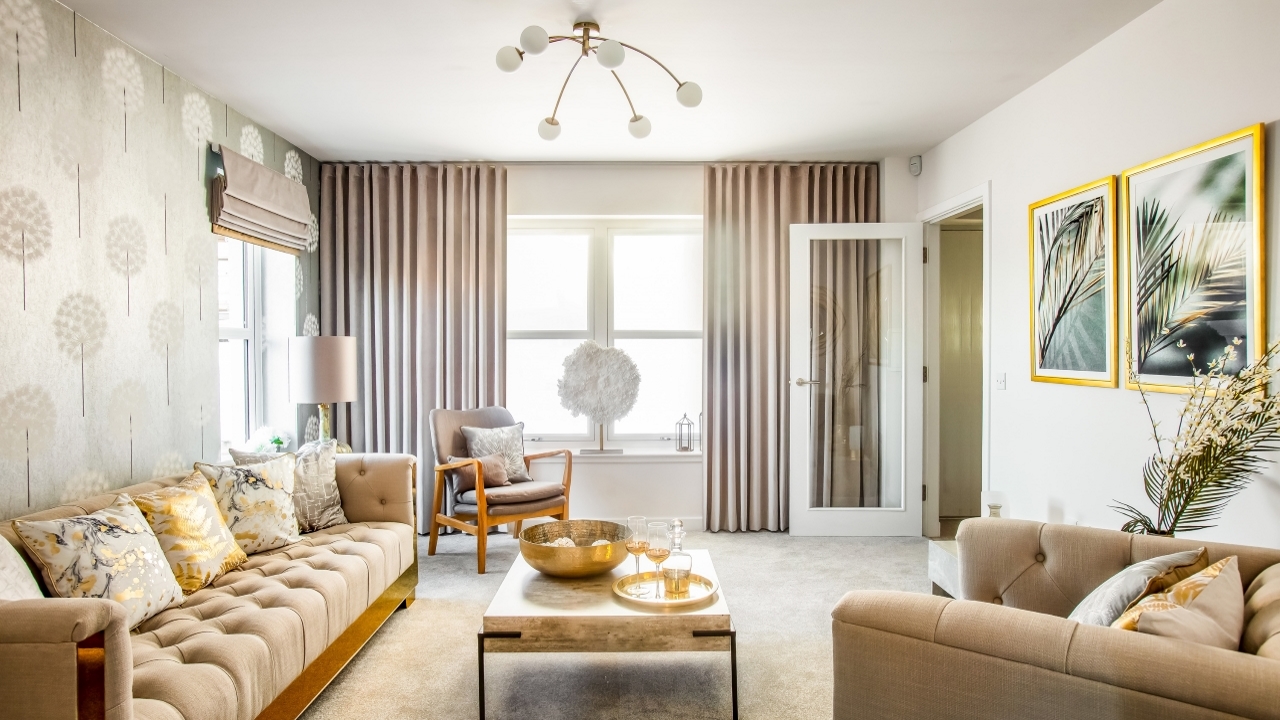The art of illumination

Light is something we don’t appreciate until it’s lacking, and illuminating the rooms in our homes involves a blend of art, science and personal preference. It’s easy to assume that a ceiling pendant bulb will provide all the artificial light you’ll ever need, yet lighting is as much a matter of taste as furniture choices or works of art.
Windows onto the world
The starting point for any room’s illumination is its windows. As well as maximising solar gain, outsized windows like the ones fitted in many Cruden homes draw light into other parts of the property through clever elements like half-glazed internal doors. A room’s aspects could also influence possible future roles, with the consistent light levels in north-facing apartments perfect for home office duties. A west-facing lounge allows you to admire sunsets from your sofa, while an east-facing bedroom with cleverly angled blinds will gradually transform as the sun rises.
Seasons in the abyss
The level of sunshine a room receives will vary greatly throughout the year, with autumn and winter posing particular challenges. When the sun is in abeyance, artificial lighting comes to the fore, and full spectrum lamps are particularly effective at tackling Seasonal Affective Disorder. Their bright white light simulates the serotonin-generating effects of sunshine on our skin, making them a depression-busting alternative to conventional filament or LED lamps. The same is also true of sunshine alarm clocks, which attempt to replicate the experience of waking up in an east-facing bedroom on a summer’s morning.
Tripping the light fantastic
Placing lights at skirting-board level might sound unnecessary, but kickplate illumination helps to avoid trips and highlight otherwise-unseen spillages. It works especially well in kitchens and staircases, with circular LEDs on each stair riser celebrating the staircase’s unsung role at the heart of every house. Your choice of bulb colour and brightness is significant too, since even switching between cool and warm white bulbs makes a noticeable difference. These shades look especially eye-catching when incorporated into soffit panels below external guttering, with a light sensor or mechanical timer turning them on as darkness approaches.
The timer of your life
Speaking of timers, smart speakers provide a high-tech alternative to cyclical lighting patterns, enabling you to turn on lamps as dusk descends without fumbling for switches – or even being in the house. A growing range of colour-adjustable lamps and lights will cycle through different shades, or display user-defined patterns of illumination. Setting one of these lights onto a slow-fade cycle creates a calming backdrop to any room, which is ideal if you’re finding it difficult to relax in today’s attention-starved times.
The main feature
We tend to think of lighting as fairly humdrum, yet a copper chandelier or matt-black wall-mounted spotlight can add visual drama to any room. Look for statement lighting above dining tables and in public rooms, where a polychromatic floor lamp could rival a fireplace or bay window in terms of wow-factor. Picture lamps fell out of favour in the late 20th century, but they’ve returned to prominence as a way of picking out favoured artworks or prints. This is also an area where disparate styles work well together rather than clashing – add character and points of interest by mixing and matching different materials, heights and even eras.
Back to Latest Posts




